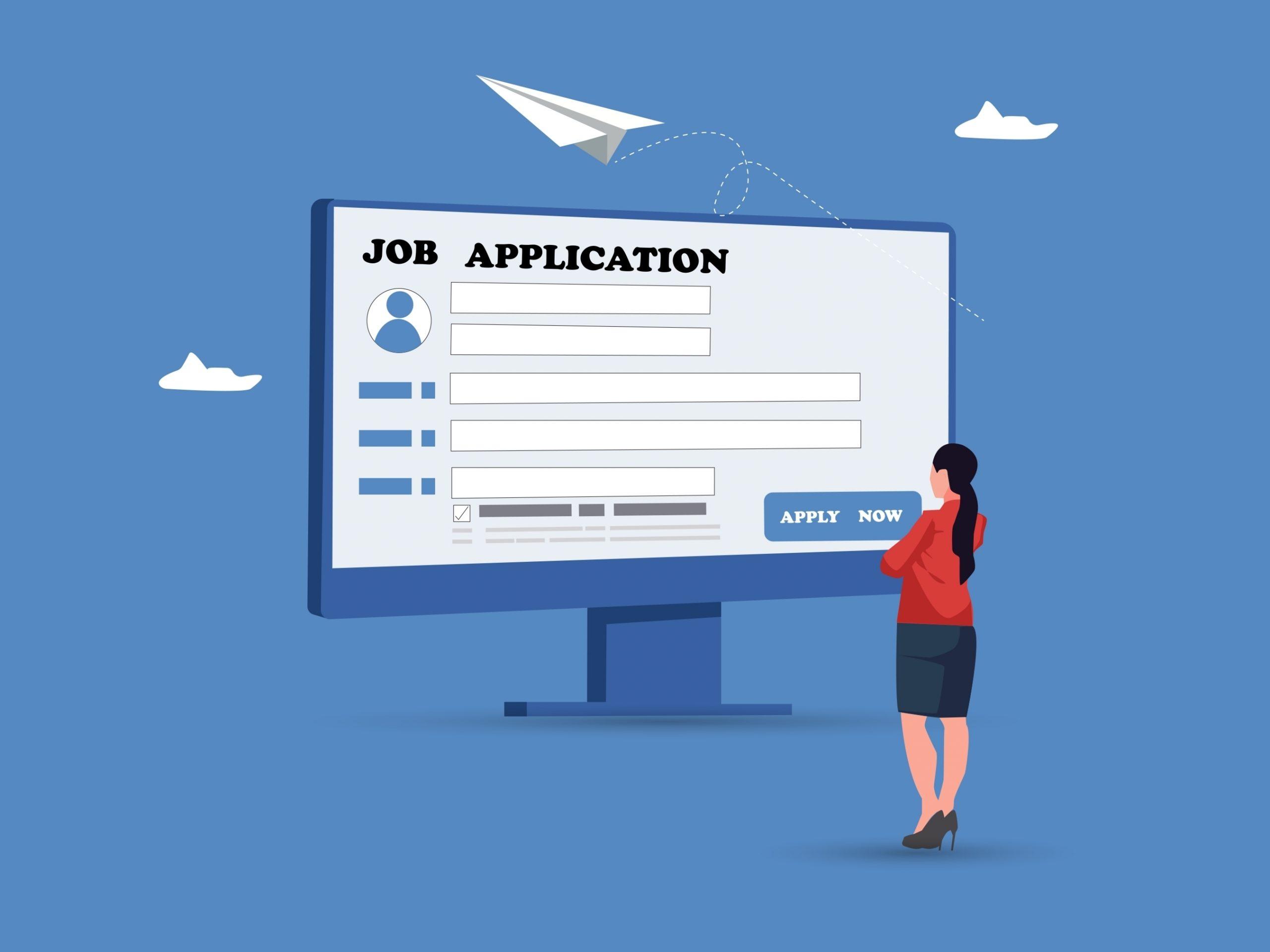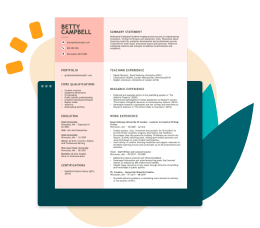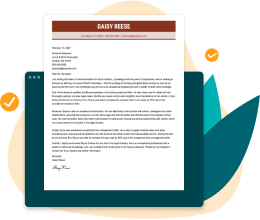How to List Computer Skills on a Resume (118 Examples)
Here, we’ll show you the top computer skills employers want. You’ll find helpful computer skills examples to put on a resume and learn how to list them.
TABLE OF CONTENTS
What are computer skills?
Computer skills refer to your ability to use specific tech hardware and software to perform tasks and achieve goals. Basic computer skills are helpful for organization, communication, finance, customer service and data management.
It’s a broad term. Rather than say you have “computer skills,” you should be specific about what you excel at: e.g., emails, spreadsheets, coding practice or installing network hardware.
Why computer skills are important
Computer skills are important because they help improve efficiency, productivity and communication at work. Proficiency in using computers allows employees to complete tasks faster, access and analyze vast amounts of information, and effectively communicate through digital platforms. You must have computer skills to land most jobs!
So, know which computer programs or software the employer uses. The more you can sell these computer skills examples on a resume, the more likely you will get hired!
Pro tip: Our Resume Builder comes preloaded with hundreds of computer skills you can add to your resume with a single click.
Computer skills by industry
Every industry and job title will require different computer skills.
Your best bet is to skim the job description for any computer skills listed and add those you possess to your resume.
Here are relevant computer skills for 20 industries:
- E-commerce and retail
- Software development
- Data science and analytics
- Information security
- Web development
- Online marketing
- Game development
- Graphic design
- Video editing and production
- Animation
- Law
- Project management
- Sales and business development
- Human Resources
- Logistics and supply chain management
- Manufacturing
- Real estate
- Travel and tourism
- Non-profit organizations
- Government and public sector
- E-commerce platforms: Shopify, Magento, WooCommerce, BigCommerce
- Inventory management systems: Fishbowl, NetSuite, Zoho Inventory
- Customer relationship management (CRM): Salesforce, Zoho CRM, HubSpot
- Data analytics: Google Analytics, Adobe Analytics, Power BI
- Marketing automation: Klaviyo, Mailchimp, Drip
- Programming languages: Python, Java, JavaScript, C++, C#, Swift, Ruby, PHP, Go, Kotlin
- Version control systems: Git, GitHub, Bitbucket
- Frameworks and libraries: React, Vue.js, Node.js, Django, Spring Boot, Flask
- Databases: SQL, NoSQL, MongoDB, PostgreSQL, MySQL, Redis
- DevOps tools: Docker, Kubernetes, Jenkins, Ansible
- Programming languages: Python, R, SQL
- Data analysis libraries: Pandas, NumPy, Scikit-learn, TensorFlow, PyTorch
- Data visualization tools: Tableau, Power BI, Qlik Sense
- Statistical software: SPSS, SAS, Stata
- Cloud platforms: AWS (SageMaker), Azure, Google Cloud Platform (AI Platform)
- Networking: Cisco CCNA, CompTIA Network+
- Security tools: Nessus, Metasploit, Wireshark
- Operating systems: Linux, Windows Server
- Cloud security: AWS Certified Security – Specialty, Azure Security Engineer Associate
- Scripting: Python, Bash, C++, PowerShell
- Front-end technologies: HTML, CSS, JavaScript, React, Angular, Vue.js
- Back-end technologies: Python (Django, Flask), Node.js, Ruby on Rails, PHP
- Databases: SQL, NoSQL, MongoDB, PostgreSQL, MySQL
- Version control: Git, GitHub, Mercurial, AWS CodeCommit
- SEO tools: SEMrush, Ahrefs, Moz, Google Search Console
- Social media management: Hootsuite, Buffer, SproutSocial
- Content Management Systems (CMS): WordPress, Drupal, Joomla
- Email marketing: Mailchimp, Constant Contact, Campaign Monitor
- Analytics: Google Analytics, Facebook Analytics
- Programming languages: C++, C#, Python, Lua
- Game engines: Unity, Unreal Engine, Godot
- 3D Modeling and animation: Maya, Blender
- Art and design tools: Photoshop, Illustrator, ZBrush
- Version control: Git, GitHub, Subversion, Mercurial, Alienbrain
- Software: Adobe Creative Suite (Photoshop, Illustrator, InDesign), Canva, Figma, Sketch
- Typography: Knowledge of font pairings, styles, and hierarchy
- Color theory: Understanding color palettes and color psychology
- Image editing: Advanced skills in Photoshop for retouching, compositing, and manipulating images
- Vector illustration: Creating scalable graphics in Illustrator for logos, icons, and illustrations
- Video editing software: Adobe Premiere Pro, Final Cut Pro, DaVinci Resolve
- Motion graphics: After Effects, Cinema 4D
- Audio editing: Adobe Audition, Audacity
- Camera operation: Understanding camera settings, framing, and composition
- Lighting and sound: Basic knowledge of lighting techniques and audio recording
- Software: Maya, Blender, Cinema 4D, After Effects
- Character rigging: Creating and animating skeletons and control systems for 3D characters
- Modeling: Creating 3D models for characters, environments and props
- Texturing and lighting: Applying materials and lighting to 3D models
- Animation principles: Understanding the 12 principles of animation for realistic and engaging movement
- Legal research databases: Westlaw, LexisNexis, Fastcase, FindLaw, Justia
- Document management software: case management systems, document assembly software
- E-Discovery tools: Relativity, Nuix, Casepoint
- Communication and collaboration: email, video conferencing, document sharing platforms
- Data analysis: Excel, statistical analysis software (for analyzing legal data)
- Project management software: Microsoft Project, Jira, Asana, Trello, Monday.com
- Collaboration tools: Slack, Microsoft Teams, Google Workspace
- Agile methodologies: Scrum, Kanban, Lean
- Communication and reporting: Excel, PowerPoint,
- Data analysis: Excel, Tableau, Power BI (for project metrics and reporting)
- Customer Relationship Management (CRM): Salesforce, HubSpot, Zoho CRM
- Sales enablement tools: Gong, Chorus, Outreach
- Communication and collaboration: email, video conferencing,
- Presentation software: PowerPoint, Google Slides, Prezi
- Data analysis: Excel, Tableau, Power BI (for sales metrics and forecasting)
- Human Resources Information Systems (HRIS): Workday, Oracle HCM Cloud, SAP SuccessFactors
- Applicant Tracking Systems (ATS): Greenhouse, Workday, Lever
- Communication and collaboration: Email, Zoom, Slack, Google Meets
- Data analysis: Excel, Tableau, Power BI (for HR metrics and reporting)
- Performance management software: Workday, BambooHR or Lattice.
- Transportation and logistics software: SAP TM, Oracle Transportation Management, JDA Software
- Warehouse Management Systems (WMS): Manhattan Associates, SAP EWM,
- Supply chain planning software: Oracle SCM, JDA Software, SAP APO
- Data analysis and reporting: Excel, Tableau, Power BI (for supply chain performance metrics)
- Communication and collaboration: email, video conferencing, Slack
- Manufacturing execution systems (MES): Siemens Opcenter, Rockwell Automation, GE Digital
- Computer-aided design and manufacturing (CAD/CAM): SolidWorks, AutoCAD,
- Inventory management systems: Fishbowl, NetSuite, Zoho Inventory
- Data analysis and reporting: Excel, Tableau, Power BI (for production metrics and analysis)
- Communication and collaboration: Email, Zoom, Slack
- Real estate management software: AppFolio, Yardi, Buildium
- Property management software: Propertyware, Rent Manager, Property Matrix
- Communication and collaboration: Email, Slack, Zoom, Google Meets
- Data analysis: Excel, Tableau, Power BI (for real estate market analysis)
- Marketing and sales tools: Real estate websites, social media platforms, CRM software
- Travel booking platforms: Expedia, Booking.com, Kayak,
- Global Distribution Systems (GDS): Sabre, Amadeus, Galileo
- Customer Relationship Management (CRM): Salesforce, Zoho CRM, HubSpot
- Data analysis: Excel, Tableau, Power BI (for travel trends and customer behavior analysis)
- Marketing and sales tools: Travel websites, social media platforms, email marketing
- Donor management systems: Salesforce, Blackbaud Raiser’s Edge
- Project management software: Microsoft Project, Jira, Asana, Trello
- Communication and collaboration: Email, Zoom, Slack
- Data analysis: Excel, Tableau, Power BI (for fundraising and impact analysis)
- Website and social media: WordPress, Facebook, Twitter, Instagram
- Government software platforms: SAP, Oracle, Salesforce
- Data Management systems: SQL, Oracle, MySQL
- Communication and collaboration: Email, Slack, Zoom, Google Meets
- Security and compliance: Security certifications, compliance with government regulations
- Data analysis: Excel, Tableau, Power BI (for government performance metrics)
Computer skills by job title
Proficiency in various computer skills is essential across different job titles. Each profession demands unique technical abilities that align with its specific responsibilities. Below is a list of key computer skills categorized by job title, highlighting the critical competencies needed to excel in various fields.
- Proficiency in social media management platforms (Hootsuite, Buffer, SproutSocial)
- Strong understanding of social media analytics (Facebook Insights, Twitter Analytics)
- Experience with content creation and scheduling tools (Canva, Later)
- Knowledge of SEO and social media marketing best practices
- Proficiency in design software (Figma, Sketch, Adobe XD)
- Understanding of user research methods and usability testing
- Experience with prototyping tools (InVision, Marvel)
- Familiarity with web development principles (HTML, CSS, JavaScript)
- Proficiency in data analysis software (Excel, Tableau, Power BI)
- Strong understanding of statistical concepts and data visualization techniques
- Experience with SQL and data manipulation languages
- Knowledge of data mining and machine learning techniques
- Proficiency in marketing automation tools (Mailchimp, Constant Contact, HubSpot)
- Experience with email marketing campaigns and content creation
- Knowledge of SEO and social media marketing best practices
- Strong organizational and communication skills
- Proficiency in Adobe Creative Suite (Photoshop, Illustrator, InDesign)
- Understanding of color theory, typography, and visual design principles
- Experience with vector illustration and image editing
- Knowledge of branding and marketing principles
- Strong writing and editing skills.
- Familiarity with SEO best practices
- Experience with content management systems (WordPress, Drupal)
- Knowledge of different content formats (blog posts, articles, social media content)
- Proficiency in CRM software (Salesforce, HubSpot)
- Strong communication and negotiation skills
- Experience with sales prospecting and lead generation
- Knowledge of sales methodologies and best practices
- Strong communication and problem-solving skills
- Proficiency in ticketing systems and customer relationship management software (Zendesk, Intercom)
- Knowledge of customer service best practices
- Ability to handle customer inquiries and complaints effectively
- Proficiency in front-end technologies (HTML, CSS, JavaScript) and back-end languages (Python, PHP, Ruby)
- Experience with web frameworks (React, Angular, Vue.js) and databases (SQL, MySQL, MongoDB)
- Understanding of web security and accessibility best practices
- Knowledge of version control systems (Git, GitHub)
- Proficiency in project management software (Asana, Trello, Jira)
- Strong organizational and time management skills
- Ability to manage multiple projects simultaneously
- Excellent communication and collaboration skills
- Proficiency in Microsoft Office Suite (Word, Excel, PowerPoint, Outlook)
- Strong organizational and communication skills
- Experience with calendar management and scheduling
- Ability to manage multiple tasks and prioritize effectively
- Proficiency in event planning software (Eventbrite, Whova).
- Strong organizational and communication skills.
- Experience with budgeting and vendor management
- Knowledge of event logistics and planning best practices
Find these helpful? Check out our Resume Builder!Based on the job you’re applying to, it will suggest computer skills for your resume that you can choose from.
How to list computer skills on resume
The best way to know what computer skills you should list on your resume is to read the job post or ad closely. This is where the employer tells you what they’re seeking!
Then, identify which of these skills you possess and make sure you add each one to your resume.
You should include computer skills on your resume in three main sections:
- A “Skills” or dedicated “Technical Skills” section.
- In the descriptions in your “Work Experience” section.
- Your professional summary or objective statement.
See the following example:
If this resume sample was helpful to you, check out our complete library of resume examples. You can find one specific to the job you’re looking for!
Show your computer skill level
on your resume
Every computer program or application is like a different language; everyone has a different level of skill or fluency.
It will help you to be specific about how strong you are at the various computer skills you possess.
There are two main ways to show your computer skill level:
- Use a resume template that features a “skills meter.”
- Use numbers to explain the results of your computer skills in the work experience section.
A resume template is a tool to help you make your resume faster. It’s a preformatted layout that a professional designer created.
Some resume templates feature skills meters that you can use to display your level of proficiency.
Here’s an example of a template with a skills meter you can use:
Otherwise, the work experience section can denote how good you are with computers in the brief descriptions of what tasks you achieved using those skills.
Here are examples of computer skills by proficiency level using work experience descriptions:
Beginner
Beginner computer skills show a basic understanding of computer systems and how to use common tools like word processors, email or social media.
Here are samples of how to list beginner computer skills in the experience bullets of your resume:
- Formatted, wrote, edited and shared files using Google Docs.
- Created office inventory spreadsheets on Microsoft Excel.
- Responded to 40+ customer emails per week.
- Organized schedules and events with Google Calendar.
Intermediate
Intermediate computer skills involve more complex computer software and tasks, such as graphic design software, operating systems and file management.
Here are samples of how to list intermediate computer skills on your resume:
- Edited and enhanced images using Adobe Photoshop.
- Led Powerpoint presentation for 50+ company stakeholders.
- Created, assigned and managed 150+ Jira tickets per month.
- Tracked Google data analytics using Ahrefs.
Advanced
Advanced computer skills mean you have a high technical ability with computers, including hardware installation, programming or web development.
Here are a few examples of how to add advanced computer skills to your resume:
- Developed and optimized the company website exceeding 3,000 monthly users.
- Fixed cybersecurity breaches for a network server with over 100 users.
- Attained Scrumaster certification to manage 300+ remote employees.
- Tested and debugged coding to launch four new software products.
Key takeaways
To recap some of the main points from this article:
- Including computer skills on resumes can significantly improve your chances of winning a job.
- Match your computer skills to the specific requirements outlined in job descriptions.
- Showcase proficiency: Include a “Skills” section on your resume, integrate skills into work experience descriptions, and mention certifications.
- Use specific examples to demonstrate how you’ve applied your computer skills to achieve positive results in previous roles.
- Add numbers to demonstrate your proficiency level or quantify achievements to make your skills stand out.
- Showcase your expertise in relevant software, platforms and tools for your target industry.
- Embrace a growth mindset and stay current with the latest technological advancements.
Tired of guessing what computer skills to put on your resume?
LiveCareer’s automated Resume Builder takes the guesswork out of writing a resume. Its Resume Check feature will check your resume for errors and suggest improvements on any areas that need enhancement, like your skills section.
With a few clicks, you can customize the skills section to match each specific job you apply for.
Stop wasting time trying to figure out what employers want to see – LiveCareer helps you create a targeted, effective resume that lands you interviews!
FAQ
What computer skills should I include on my resume?
The best computer skills to include on your resume are the most relevant to the job.
Focus on skills mentioned in the job description. Include software, platforms and coding languages that you are confident using.
How do I feature computer skills on a resume?
Create a dedicated “Skills” or “Technical skills” section highlighting your computer skills.
You can also pepper them into your work experience bullet points. Also, including them in your professional summary may grab more attention since it’s at the top of your resume.
Should I include basic computer skills on my resume?
Yes, include any basic computer skills on your resume, even if it seems assumed that you possess them, because employers need confirmation.
It’s also wise to focus on advanced or specialized skills that may not be requested because that hints that you can handle any challenge the employer needs.
Is it important to stay updated with the latest technology trends?
Yes, we live in a digital age. Employers want to know that you’re familiar with the latest and greatest technology because that will mean you’ll be ready to take on the job on day one.
Especially for careers in tech or IT, being up-to-date is crucial!
How can I demonstrate computer skills in my resume work experience section?
Describe how you used those skills to achieve results in previous roles. It’s more convincing to mention the results your skills achieve rather than claim that you have them.
For instance, “Optimized marketing campaigns, resulting in a 15% increase in website conversions.”
Do I need a cover letter if I showcase my computer skills in my resume?
A well-written cover letter will improve your chances of getting a job. A cover letter gives you space to further elaborate on your computer skills and how they align with the job requirements.Check out some cover letter examples to get inspired!
How do you describe resume computer skills in a cover letter?
Connect your skills to the company’s needs and emphasize how your expertise can contribute to their success.
A great tactic is to explain how you used your computer skills for problem-solving in your cover letter.
How do I highlight my computer skills in a job interview?
Planning and preparation is key! Be ready to discuss your experience with specific software, platforms, and technologies relevant to the role.
Share examples of how you’ve used your computer skills successfully to solve problems and achieve great results!
How we reviewed this article
Over the past 15 years, we’ve helped more than 10 million job seekers build stronger cover letters, discover their career paths, interview confidently, and boost their chances of finding the right job faster. Review our Editorial Policy to learn more about our process.
Featured in:*

*The names and logos of the companies referred to in this page are all trademarks of their respective holders. Unless specifically stated otherwise, such references are not intended to imply any affiliation or association with LiveCareer.














